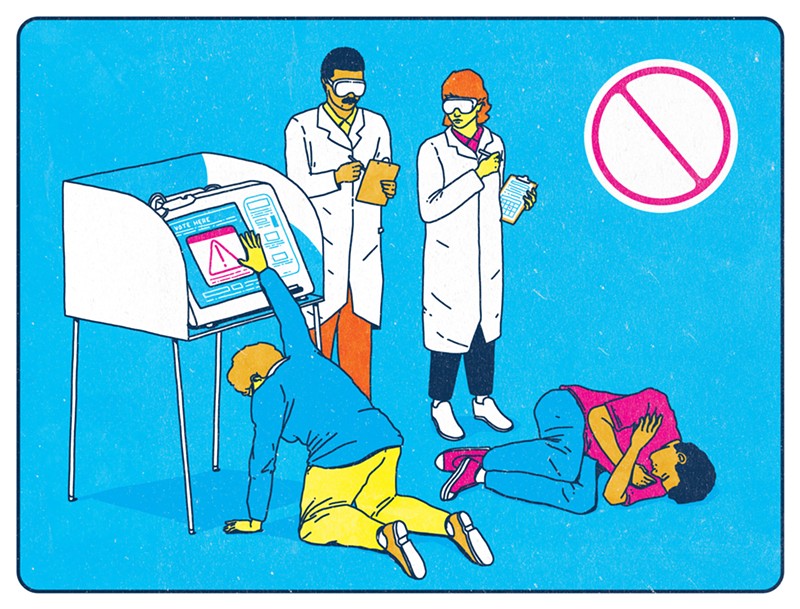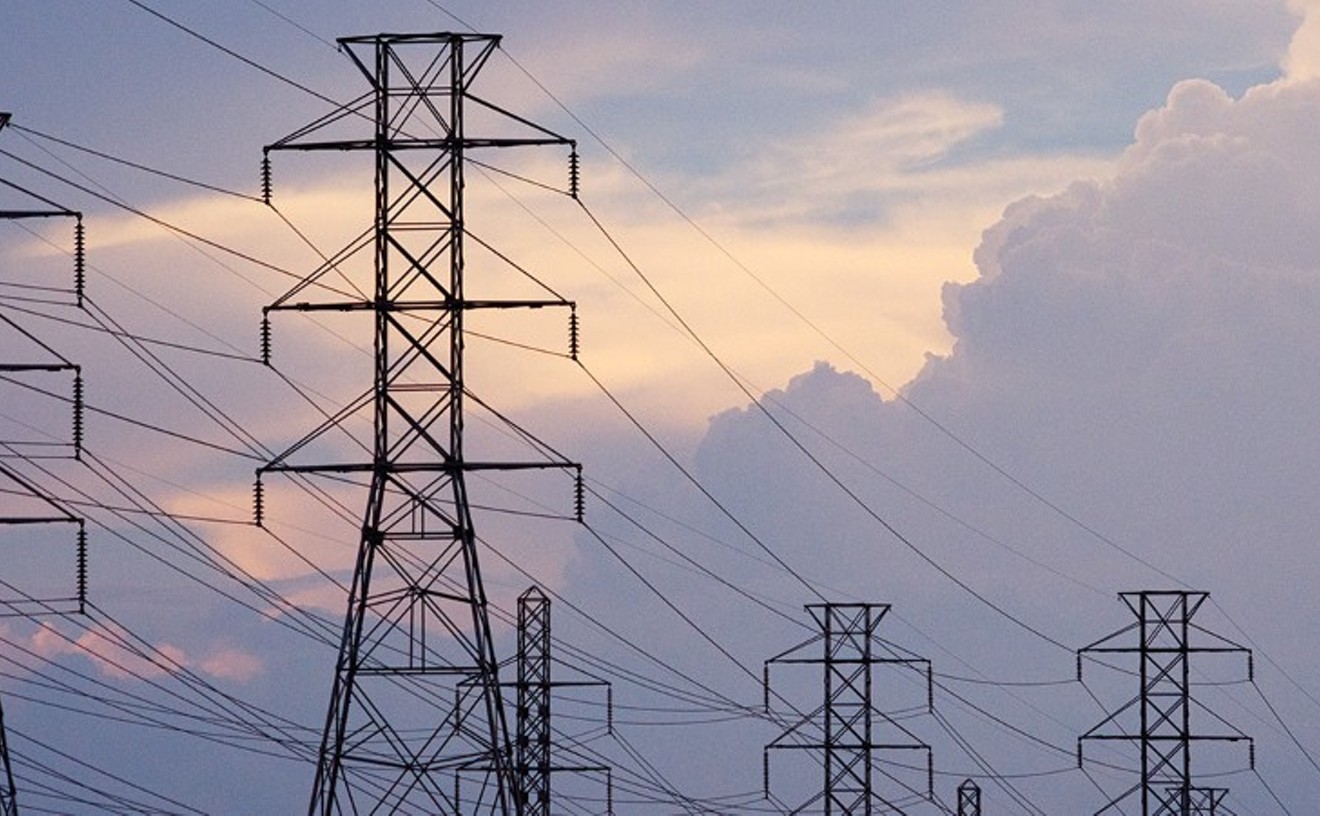But recent research has shown that the type of electronic-hybrid system the county uses can be susceptible to manipulation, because most voters simply don’t notice discrepancies between the votes they entered on the electronic touch screens and what shows up on their printed ballots.
With that risk, combined with other changes to how the county conducts its elections, voting rights advocates are calling on county elections officials to reach out to voters in the form of town hall meetings, mailers and social media posts to help them understand what to expect when they go to the polls on Super Tuesday.
Likewise, advocates say county elections officials need to make sure the volunteers who staff polling places across the county are ready for any problems or confusion that might come up.
“Poll workers need to be thoroughly trained to look out for problems and how to fix them,” said Ryan Cox, senior attorney for the Texas Civil Rights Project’s voting rights program.
A New System
In 2019, Dallas spent $30 million on the “hybrid” voting system, which includes the electronic poll books that workers use to look up voter registration information, as well as the ballot marking devices and scanners. With this system, voters sign an affidavit confirming their identities. Then, poll workers give them paper ballots, which voters feed into a ballot marking device on which they make their selections on an electronic screen. After confirming their votes, voters receive a printed paper ballot, which they then insert into a scanner. The paper ballot is how votes are officially counted.
Previously, Dallas County used the Election Systems & Software iVotronic system, touch-screen machines with electronic ballots that had to be inserted into the device by poll workers to initiate voting. Voters also had the option to vote on paper. Ballots were then scanned and counted using an ES&S Model 100 vote tabulator.
With changes to voting in Dallas County come inherent risks and unknowns. The November 2019 state constitutional amendment election gave the county a chance to test run the new voting machines and countywide polling places. Even though not even 10% of Dallas County’s registered voters cast ballots in the November election, it exposed problems with the new voting system.
Dallas County bought ballot marking devices and scanners from the Omaha-based firm ES&S and the initial e-poll books from a different company, Tenex. But in January, the county had to go back and buy new e-poll books from ES&S after discovering the Tenex poll books don’t work securely with the ES&S ballot marking devices. Because of possible litigation, county officials don’t know what the final cost to the county will be.
A recent study of ballot marking devices by the University of Michigan found that a majority of voters don’t notice discrepancies between the votes they cast on the screen and the votes printed onto the ballot paper. In the study, only 40% of voters checked their printed ballots without being reminded to do so by a poll worker. Only 6.6% alerted a poll worker that they had found a discrepancy, although all the ballots produced by the experiment had errors.
This could bring the integrity of elections into question. If a security issue occurs and the system is infected with a virus that alters what is printed onto the paper ballots, the very reason these machines were implemented — having a paper trail — will be invalid.
Human error could also factor into the equation. Mistakes are more likely to occur because of voters’ inexperience with this type of machine and their failure to confirm their selections, as reported by the University of Michigan study.
The new system comes alongside a pair of other changes that could cause confusion and delays on election day. Beginning this year, voters no longer have the option of voting straight-ticket Republican or Democrat. They will instead have to choose each candidate individually. Also, voters in Dallas County may now cast their ballots at any of the 468 voting centers within the county rather than being limited to voting in their precincts.
Dallas voting rights activists and organizations say that educating voters before the election is the key to avoiding issues that may arise with the new hybrid voting system, as well as the other changes.
“We were just now getting our voters used to the electronic machines,” says DeNita Quinn, a precinct chair for precinct 4046 in Oak Cliff. “I don’t think there should be so many changes so fast. And we wait until a vital election comes to test these new machines. That creates another suspicion.”
Before the November constitutional election, Dallas County's elections office posted educational videos produced by ES&S, the manufacturer of the county’s new voting machines, explaining how to use the machines on the county’s YouTube Channel and Facebook pages. These videos are also linked from the Dallas County Elections website. But the ES&S instructional video doesn’t prompt voters to check their paper ballots before inserting them into the scanner.
Dallas County hasn’t posted about the new voting system at all in 2020 on their Facebook, Twitter, Instagram or YouTube accounts. Many voting rights activists are worried the county hasn’t done enough to prepare voters for these new machines. Some had ideas about how best to reach out to voters ahead of the March primary.
Democratic precinct chair Millie Domenech suggested mailing out information about the new machines along with new voter registration cards. Sarah Corrigan Hans, of the grassroots organization Rideshare2Vote, said the county should put out more voter education videos on Facebook and Twitter.
Synbad Ontiveros, a spokesman for the Latino Voter Empowerment Coalition, suggested town hall meetings where county officials could explain the new voting equipment.
“Target the high schools and colleges — have the equipment come out to those campuses,” Ontiveros said. “Educate the kids and the kids, in turn, could educate their families.”
Cox, the Texas Civil Rights Project attorney, also emphasized the importance of well-trained poll workers helping people on-site as they vote. Those workers can help eliminate some of the confusion voters will face on election day, he said.
“For example, voters who have used these machines sometimes think the printouts are receipts as opposed to being their ballots that have to be inserted into a separate machine,” Cox said. “Some counties plan to post an employee at the exit to make sure this doesn't happen. That's good planning, and we're happy to help counties think through these details all year-round."

When Dallas County voters go to the polls next week, they'll see a new type of voting machine.
Keith Allison
‘Everyone is Going to Be a Rookie’
Dallas County Elections’ main education strategy is to train its poll workers to remind voters to review their selections on the touch screens and check their printed ballots before casting them, said Toni Pippins-Poole, the county’s elections administrator.
The county held poll-worker training sessions in December, January and nearly every day in February in advance of the March primary to educate workers on the hybrid systems the county rolled out in November as well as the new ES&S e-poll books, which will be used for the first time in the March primary.
On election day, there will be a sign on each of the scanners reminding voters to review their ballots before casting them. But the Michigan study found that signage didn’t help voters catch problems before they submitted their ballots.
Diana Burns, of the nonprofit Clean Elections Texas, argued that checking paper ballots is part of the voter’s responsibility. One good way of doing that is bringing a list of candidates and ballot issues they plan to vote for, like the League of Women Voters guide, so that they have something to check their printed ballot against. In fact, the Michigan study confirmed that bringing sample ballots to the polls is an effective way to help voters verify their votes on the printed ballot.
“To double check their ballot is a way citizens can help the county elections department be sure everything is working right,” Burns said. “It’s citizens taking ownership of their vote.”
District 2 County Commissioner J.J. Koch said the county could do as much voter outreach as it liked, and there would still be voters who showed up to the polls without any idea how the new system worked.
“People ignore a ton of stuff,” Koch said. “The vast majority of voters will show up on primary day never having seen this system and will need some coaching.”
Having a brand-new voting system means that no one is an expert, except for Dallas County elections staff and ES&S employees, a limited number of whom will be here during the March primary early voting and on election day.
“Even our best poll workers who have been doing this for 20 years … everyone is going to be a rookie on an election day,” Koch said. “There’s going to be very little troubleshooting done by poll workers; it’ll be a heavy reliance on ES&S and our internal county staff.”
Both Tarrant and Collin counties also began using hybrid voting systems with ballot marking devices in the November 2019 election, and both counties are taking similar approaches to Dallas County in rolling those systems out and educating voters about them. Bruce Sherbet, elections administrator for Collin County, stands by the security of these new systems.
“Ballot marking devices provide two levels for the voter to verify their selections: the summary screen prior to printing their ballot and the printed selections on the paper ballot,” Sherbet said.
Sherbet said it’s incumbent on county elections officials to get poll workers ready to help voters with the new voting process. There are other important tools counties can use, like websites and instructional posters, to help educate voters on the new systems, he said.
Elba Garcia, the Dallas County commissioner for District 4, said the county got positive feedback from voters after the November election.
“While there are always growing pains with the implementation of any new system, the vast majority of voters we heard from said they liked the new machines and that they were very easy to use.”
Serious Problems
All of these voting changes — no more straight-ticket voting, countywide polling centers and new voting systems — could all come to a head on the day of the March primary, causing long lines for voters.
Because registered voters can now vote at any polling place in the county, there will inevitably be higher turnout at locations that are in high-traffic areas, leading to longer lines. Dallas County plans to have a list of nearby polling locations available at these high-traffic voting centers to divert people to election centers with shorter lines or no wait times.
Not being able to vote straight-ticket may also increase wait times. Voters will have to take the time to vote for a specific candidate for each election instead of choosing a party and being done with it.
The new voting system could also affect wait times. Poll workers will need to explain to voters how to use these new machines, and there will be few true experts on hand if there is a machine failure, since poll workers are also new to the systems. It will take longer to get the machines back up, since the county will be relying on a small number of ES&S staff.
The countywide polling locations could compound this issue even further. The machines at high-traffic locations will be used more, increasing the probability of system failures. If a machine is taken offline to be worked on by ES&S staff, that will decrease the number of machines available for use at an already-busy location, putting even more strain on the working machines.
Koch, the District 2 commissioner, said the county would divert resources to high-traffic polling places. But there will only be so many ES&S workers available to help fix any problems, he said. If problems pop up at more than a small handful of places at once, it could spell major headaches.
“At some point after a critical threshold, which is not that high, things could go off the rails,” he said.
Koch strongly recommends that people vote early in the March primary.
“Voting early is going to be the best way to avoid some of these problems,” he said. “If over 50% of our vote count is voting on election day, then we may have some serious problems.”













